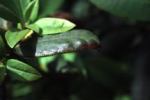I found this fascinating map while searching what kinds of soils are distributed throughout the US. This is from a worldwide database that measures the suitability of soil for agricultural purposes. As you can see from the map, most soils in the US are highly suitable, which is indicated by the green colors. The numbers represent how many obstacles must be overcome before producing plants, so the lower the number the better. Although you may be in a less desirable area of -4 to -8, there is no reason why you cannot still garden, there just may be a few more steps in the process of creating a fertile soil environment. Plant choice is always critical to successful gardening.
Although you may be in a less desirable area of -4 to -8, there is no reason why you cannot still garden, there just may be a few more steps in the process of creating a fertile soil environment. Plant choice is always critical to successful gardening.
Those in areas of green soil will still need to pay attention to soil type (sandy, silty, clay), fertilizer needs, soil pH and plant choice. There’s no getting away from those elements of gardening, no matter how great your soil is to start.
Those in the orange to red range will want to consider container gardening, raised beds with topsoil trucked in, or very careful plant selection.
Next, let’s talk about sandy soils.






















